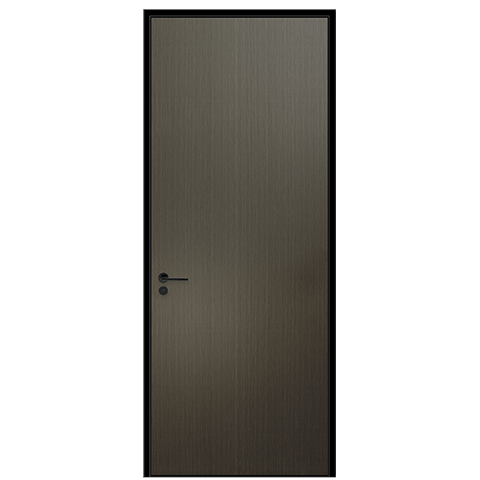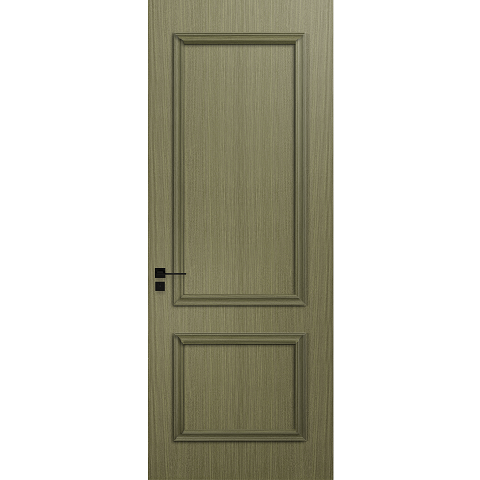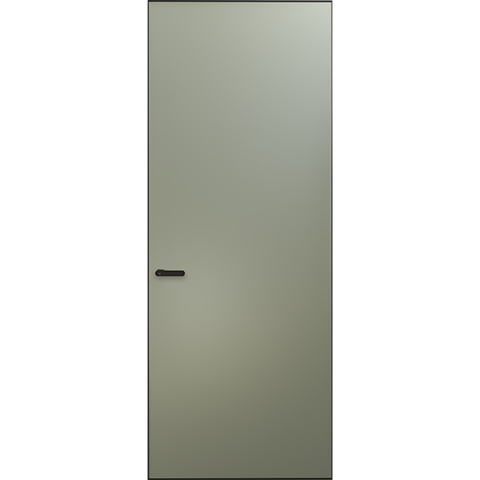Thermal insulation of doors and windows | One of the two major elements of door and window purchase
At present, "the thermal insulation effect of doors and windows" is no longer just a general adjective. If consumers care about the thermal insulation capacity and K value (heat transfer coefficient of doors and windows) of doors and windows, they can already buy TVs according to the resolution. Door and window products with different insulation levels can be purchased.
So if you want to go to the store to buy doors and windows with better thermal insulation performance (actually thermal insulation, thermal insulation = heat insulation + cold insulation), don't ask directly "what are the aluminum alloy doors and windows with better thermal insulation performance?"
This seems unprofessional, and will only get a mechanical answer from the shopping guide "Don't worry, big brother! Our brand is the best insulated."
You should ask the shopping guide:
Do you have a performance inspection report for your doors and windows? What is the insulation performance of XX series? Oh, this series has good thermal insulation performance? Tell me which structures improve the heat retention.
01 Performance inspection report and K value of doors and windows
The performance inspection report of doors and windows, that is, many home improvement door and window brands will submit their various product series for inspection, and the professional inspection unit will obtain specific performance parameters such as air tightness, sound insulation, and thermal insulation of doors and windows.
The heat transfer coefficient of doors and windows, that is, the K value. The main index used to measure the thermal insulation performance of doors and windows refers to the heat transferred through an area of 1 square meter within 1 hour when the air temperature difference on both sides of the enclosure structure is 1 degree (K, ℃) under stable heat transfer conditions. In layman's terms, the lower the "K value" (the picture is above), the slower the home heats up in summer and the slower it cools in winter, and the better the insulation performance of doors and windows; the higher the "K value", the worse the insulation performance.
Viewing the K value in the door and window performance inspection report is the fastest way for consumers to obtain the thermal insulation performance of the product
With the popularization of system doors and windows in recent years, every city has more or less manufacturers or merchants (usually with relatively large brands) who pursue "speaking with data".
It is relatively simple to buy from such merchants. Buy according to the insulation level (requires higher glass addition), and then focus on inspecting the merchant's installation capabilities and bargaining.
Of course, at present, most door and window brands and businesses do not have such test reports. At this time, we must learn and observe the following knowledge:
02 Heat insulation elements of doors and windows
1. The larger the series, the better the heat insulation. The wider the heat insulation strip, the narrower the heat insulation
Many merchants sell without thinking. If you want heat insulation, then choose high series doors and windows, 80, 90, 108. In short, the larger the series, the wider the windows, the doors and windows will be insulated!
no! The motive of the merchant here is not pure, and the concept has been changed secretly!
The larger the series, the better the heat insulation is relative. Only the wider the heat insulation strips and the better the heat insulation in the broken bridge aluminum door and window products is absolute (only compare profiles)! This is also the origin of the word "broken bridge" in the broken bridge aluminum doors and windows. The heat insulation strip is like a cold bridge, blocking the heat transfer between the two profile heat bridges
In the overall K value of doors and windows, the influence of frame leaves (that is, aluminum profiles) accounts for 20%-30%, and the best way to improve its thermal insulation capacity is to increase the width of the heat insulation strip
2. Insulating glass is the main force of heat insulating glass, and it is more advanced with a Low-e:
Glass accounts for 70% - 80% of the entire window area, so the thermal insulation of the glass part plays a decisive role in the thermal insulation performance of the entire window (the data is 62% - 74% of the entire window).
Generally, we choose glass with better heat insulation performance from the four glass types of insulating glass, three glass and two cavities, Low-e insulating glass, and Low-e three glass and two cavities (except for vacuum glass and protection or sound insulation) Laminated composite glass used).
In terms of cost performance, we highly recommend Low-e insulating glass
3. The wall thickness has no effect on the heat insulation of broken bridge aluminum
Just like "the bigger the series, the better the heat insulation", some merchants will equate the wall thickness with the heat insulation. Baydee has seen a group of experimental reports on broken bridge aluminum. The wall thickness and series have an impact on the wind pressure resistance of doors and windows, but there is little improvement in thermal insulation performance (K value fluctuates at 0.01).
4. The sealing structure is exquisite: three seals, isothermal line, and the rubber strip does not break
Whether the heat insulation performance of the door and window structure is good or not depends on the heat insulation strip and its sealing structure. How to look at it, there are 3 points: whether it is three seals; whether there is an isotherm; whether it is a press-in rubber strip.
The three-sealing structure is to add a sealing strip on the frame and fan profiles (△ see the "middle seal" on the right side of the picture above), so as to separate the two sealed water and steam blending chambers (▽ chamber schematic diagram ), forming a watertight cavity on the outdoor side and an airtight cavity on the indoor side, which improves the airtightness and enhances the thermal insulation performance.
When the hot and cold air is exchanged inside and outside the doors and windows, the two broken bridges are in the same straight line, which is more conducive to the formation of an effective "cold-heat bridge barrier". There is less hot and cold air running around, reducing unnecessary heat loss.
You can try to ask the door and window owner: Are your window strips pierced or pressed. It can also be observed on the sample corner: the notch of the penetrating adhesive strip is longer and shallower than that of the press-in adhesive strip; it can also be observed from the finished window, whether the adhesive strip at the corner of the window is cut off, or whether it is There are traces of glue sticking.
Press-in rubber strips can be "seamlessly" connected at the corners of the window (when turning), without violent truncation, which improves the airtight seal and enhances the thermal insulation performance.
5. The cavity is filled with insulation material
The principle is to fill the cavity between the glass and the profile and the cavity between the heat insulation strips with thermal insulation materials to reduce the heat and cold exchange speed between the cavities.
03 Which are not the heat insulation elements of doors and windows
By studying the heat insulation elements of doors and windows listed above, I believe you have a certain degree of confidence in choosing "doors and windows with better heat insulation performance". Below, Baydee lists some non-door and window heat insulation elements, which can be properly ordered by merchants:
1. Brand: Consumers who choose mobile phones have a steelyard in their minds. "Choose millet for cost-effectiveness, choose Huawei for taking pictures, and choose Apple for easy operation." Door and window brands basically have no reference value for product positioning, just talk about parameters and structure.
2. The series and wall thickness mentioned above: the reason will not be repeated.
3. Laminated glass and its composite glass: Laminated glass for home decoration doors and windows is mostly used in sunny roofs and sound insulation scenes. Safety and sound insulation capabilities are its advantages. If you want to make laminated insulating glass for heat insulation, it is not as good as three glasses and two cavity is solid.
4. Window type: The window type is not positively correlated with heat insulation performance, but the sealing performance is. Merchants say that the heat insulation of opening inwards and inverting > openings > sliding windows is not absolute, and it is king to choose according to the heat insulation elements provided by Baydee.
04 Others related to the thermal insulation performance of doors and windows
If you want to realize the heat insulation of doors and windows more perfectly, you can also understand 3 points:
1. Installation sealing and heat insulation matters
The foaming agent in the installation gaps of doors and windows is fully filled, and the caulking and durability of the exterior wall sealant will definitely affect the performance of the insulation performance of doors and windows. It is necessary to inform the installation workers in advance not to miss and to supervise the workers on site.
Some door and window sunshine rooms will use aluminum alloy auxiliary materials such as strips, panels, pipes, and corners during installation. It is best to ensure that these materials are "broken bridges".
This is very important, and consumers tend to overlook it. If the installation auxiliary material used is a non-broken bridge, then its joint is a heat insulation bug, and a steady stream of heat will be transferred from here, which greatly reduces the insulation performance of doors and windows. play.
2. Sunshade material
Door and window sunshade materials are divided into two types: inner sunshade and outer sunshade. Now with the improvement of building energy-saving standards, more and more real estate developers have been equipped with sunshade products. Those who have higher requirements for the living environment can also consider using them . .
Outdoor retractable sunshades, arm-type awnings, indoor built-in louvered insulating glass, blackout curtains, honeycomb curtains, etc. can all be considered, and the outdoors are the best priority (the effect of shading when the light enters the room is definitely not as good as the outdoors).
 Hot Recommendation
Hot Recommendation
 Latest Products
Latest Products



